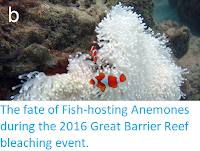A large pumice raft, covering an area of about 400 km², has been observed drifting towards Australia's Great Barrier Reef. The raft was first observed on 9 August 2019, when NASA's Terra Satellite observed it near Late Island in the Kingdom of Tonga. It was recorded again on 13 August by the Operational Land Imager on Landsat 8, having drifted some way to the southwest. On 15 August the Catamaran ROAM encountered a raft of pumice rocks from a few centimetres to tens of centimetres in size, that completely covered the sea so that the water could not be seen. The vessel inadvertently entered the raft at night, and not being able to see the other side, slowed to about 1 km per hour and reversed out.
Pumice raft near Late Island, Tonga, on 13 August 2019. Landsat 8/NASA/Earth Observatory.
Pumice forms when hot lava from submarine volcanic eruptions encounters
seawater and cools rapidly, simultaneously crystallising and degassing to
form a lightweight volcanic rock with many gas filled vesicles
(bubbles) within it, which often floats on the sea surface. Big
submarine eruptions can produce large volumes of pumice, forming rafts
of pumice that cover hundreds of square kilometres, and drift on the
ocean surface for months before dissipating or washing ashore.
Crew member Larissa Brill on the Catamaran ROAM with samples of pumice collected from a raft near Tonga earlier this month. Sail Surf ROAM/Facebook.
On this occasion the pumice is thought to have been erupted from unnamed submarine volcano near Tonga at 18.325° South, 174.365° West. The raft is drifting towards the Great Barrier Reef on the east coast of Australia, but it not thought to present any threat to the reef, but instead likely to bring new colonising reef organisms with it, as it is predicted to pass reefs off the coast of New Caledonia and Vanuatu, as well as other Coral reef areas in the eastern Coral Sea, during the annual spawning season, during which the organisms of the reefs produce millions of tiny larvae, each looking for a new place on the reef to attach, which are capable of colonising pumice rafts and thereby reaching more remote locations. This input of new organisms could prove highly beneficial to the Great Barrier Reef, which has been damaged in recent years by pollution, heat stress and blooms of the aggressive Crown of Thorns Starfish, Acanthaster solaris, though such new arrivals cannot protect the reef against future damage from the same causes, none of which seem likely to abate.
Reef organisms colonising pumice stone: Two pieces of pumice bound together by Cyanobacteria (photosynthetic filament-forming Bacteria, principally Rivularia sp.) and Macroalgae (Seaweed, Caulerpa sp.) collected from Broadbeach in southeastern Queensland on 27 December 2007. Also present are two Cauliflower Corals (Pocillopora sp.), a Colonial Scyphozoan (Order Coronatae, the benthic larval stage of a Crown Jellyfish), Goose Barnacles (Lepas anserifera) and a Pearl Oyster (Pinctada sp.) Bryan et al. (2012).
The islands of Tonga lie along the boundary between the Pacific and Australian Tectonic Plates. The Pacific Plate is being subducted beneath the Australian Plate along the Tonga Trench, which forms the boundary between these two plates, with the volcanic islands that make up the archipelago being formed as the subducting plate is melted by the heat of the planet's interior, so that lighter minerals rise up through the overlying plate as liquid magma, which fuels the volcanoes that build the islands.
Diagram showing subduction along the Tonga Trench, and how this feeds the volcanoes of the Tonga Volcanic Arc. York University.
See also...
Follow Sciency Thoughts on Facebook.










